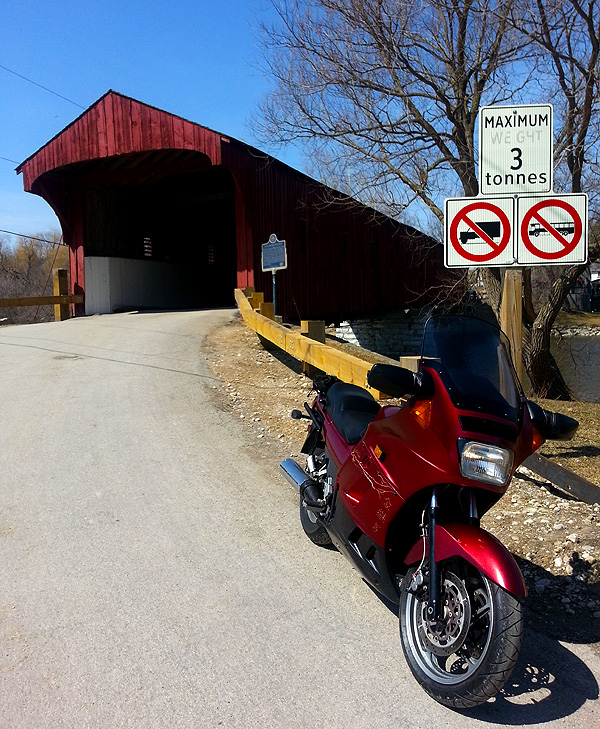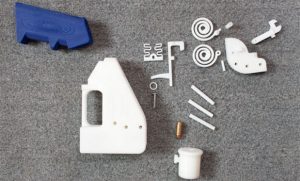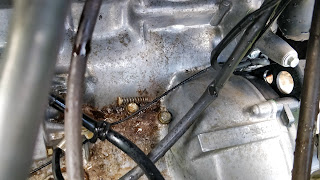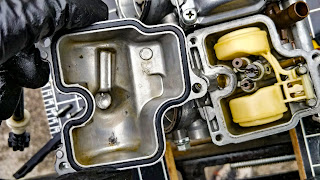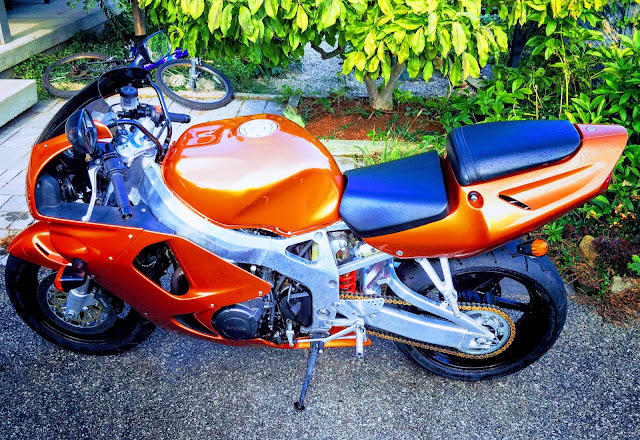| Google ‘biker’ and you get a lot of pictures of old white guys. Good luck selling them bikes in 20 years. |
The other day a fellow rider on twitter shared a link to this article on how the motorcycle industry is in real trouble. Among the litany of problems was the hyper conservative nature of the industry and its habitual focus on old white guys. The biker image is a bastion of pre-Twenty First Century prejudices; women (unless they’re pillions and dressed like dolls) and non-white riders need not apply. Groups like Bikers for Trump continue to find a comfortable place to operate within these old-school prejudices. I’d suggest that an industry that wants to cling to this dying sense of privilege deserves to be in big trouble.
Of a less cut and dried nature (unless you’re clinging to colonial, white guy privilege) was the piece about how young people aren’t riding motorcycles or even driving cars as much any more. I’d argue this is a larger and more difficult problem to solve. I struggle daily with getting young people to engage with and master real world technical problems (it’s my day job). I wasn’t at all surprised to see this as a conclusion from the research:
“…many millennial consumers were “bubble-wrapped for safety in their youth” or raised by overprotective parents who discouraged risk-taking”
A few years ago I suggested we start a motorcycle club at our school. Some of our students go out and get their licenses and begin to ride and others dirt bike ride, so there would be interest. We could use the experience and expertise of our teacher-riders to help students more safely and effectively take to two wheels. The skills learned in maintaining and repairing motorcycles in our shop would mean safer vehicles for our students to use and an increase in technical skill. They all sounds like good ideas, right? It was nixed immediately: a hard no. We run rugby teams and downhill ski race teams and go camping in bear country, but riding a motorcycle? Way too dangerous. I suggested that was exactly why we should do it, but still a hard no.
| We need to bring back the kind of inclusive advertising that worked for Honda so well over forty years ago. |
There is, no doubt, a danger halo around motorcycling that is a big part of its mystique, but the operation of a motorcycle isn’t dangerous in and of itself. Many riders like to play to this mystique, making it seem more edgy because that’s the image they want to convey, but it isn’t helping the sport. That focus is also used to hyper masculinize the image of a motorcycle rider and plays to the conservatism that plagues the industry.
It’s always a relief when someone subverts that tired, old stereotype…
Apart from the prejudices and mythology around motorcycling, we also have a new generation of people who aren’t taking up the sport, but then they aren’t taking up vehicle operation in general.
“For 16- through 44-year-olds, there was a continuous decrease in the percentage of
persons with a driver’s license for the years examined. For example, the
percentages for 20- to 24-year-olds in 1983, 2008, 2011, and 2014 were 91.8%,
82.0%, 79.7%, and 76.7%, respectively.”
There are a lot of social reasons for this to be happening. More of us live in cities than ever before and driving in cities is misery. Many jurisdictions don’t acknowledge the advantages of riding a bike in an urban environment either, making riding an even dimmer proposition than driving. The independence afforded by vehicle operation that used to define coming of age as a teen has become increasingly expensive even as wealth has been concentrated in a smaller and smaller class of people; fewer rich get richer while more poor get poorer. With money slipping out of the hands of a vanishing middle class, the idea of buying into the independence of operating your own vehicle becomes increasingly impossible for many youngsters, especially with systemic economic discrimination like insurance forcing them off the road.
There is a final piece to this perfect storm diminishing the motorcycle industry that I haven’t seen as much about. Last night I watched Kingsmen: The Golden Circle, and like every other film I’ve seen in the past few years, it’s a few moments of acting tied together by ludicrous computer generated imaging. When I was young I stumbled upon a Bruce Lee marathon late one night and got really fired up about it. Watching Bruce do his thing was inspiring. I’d make the argument that a generation brought up on fake, computer generated action wouldn’t feel that kind of inspiration to get out in the world and do things like do kung fu or ride a motorbike.
Marketing is happy to pick up this idea of showing you cars doing things they can’t actually do because you’re buying an idea. How the car makes you feel is what makes it valuable, not what you can actually do with it. Whether it’s Nissan pretending their cars are in Star Wars or Chevy pretending their cars are skateboards, the marketing and special effects departments are more than happy to sell you on an idea rather than engineering. I won’t even get into Kia selling you on a car that will drive for you because you’d rather be daydreaming.
In this digital dream-time we’re all immersed in, you can you see why something as unforgiving and physically challenging as motorcycling might be one of the first casualties. It’s going to be a long time if ever before we see accident avoidance on something as elemental as a motorbike. For all those young drivers who expect their car to drive for them when they can’t be bothered to pay attention, this moves motorcycles even further away from the realm of possibility. Coupled with the danger mythology many riders are guilty of promoting, it’s little wonder that motorcycles increasingly seem like something from another time and place.
Forgetting the old white guy thing for a minute (it’s going to go away on its own anyway), how can the industry get people back on motorcycles again? The obvious first step is to make your advertising plausible and inclusive. Don’t digitally animate anything. Show riders of all types enjoying the elemental freedom of riding. This doesn’t need to include jumping canyons or putting knees down; the joy of riding is a simple, accessible pleasure. Show people commuting, going out on a date and otherwise living their lives. Minimize the costuming, especially the pirate thing, emphasize how effective modern safety gear is. Honda had this figured out decades ago and it prompted a renaissance in riding. There is no reason why we couldn’t do it again.
Build bikes that appeal to all sorts of riders. Smaller, easier to handle bikes for beginners that push technology to create something so efficient that it makes snooty hybrid car drivers look like diesel pigs. A 100mpg bike is an immediate possibility. A hybrid touring bike that gets mega mileage but can still move two up easily? An all electric bike? These things should be moved on aggressively.
When coupled with a campaign to emphasize how efficient bikes can be at moving people around, especially in cities, it would play to the urbanization of our population instead of against it. Motorized bikes are capable of moving people more effectively and efficiently than just about any other form of transportation, if we let them. Why do you think crowded developing cities are so full of two wheelers? Pressuring governments to recognize this and encourage two wheeling instead of vilifying it would be a great step forward. Can you imagine how many people would flock to a motorcycle industry couched in marketing around environmentalism and the elemental thrill of riding as an escape from the digital miasma? Escape the Matrix indeed.
| Governments ignore a lot of research that clearly demonstrate how efficient motorcycling can be, especially in an urban environment. |
Ontario offers thousands in incentives for people driving environmentally questionable hybrids. What would happen if you got thousands back in incentives for buying a motorcycle that gets better mileage than a Prius? There are a lot of them – my fourteen year old 955cc Tiger gets better mileage than the Toyota green flag waving hybrid and was way less damaging to manufacture. Can you imagine how many more people would ride these environmentally minimalist machines in cities if they could lane split and move quickly to where they needed to be, reducing traffic and improving the flow for everyone?
Why not do one better and apply those incentives to emphasizing the power and importance of the rider? Instead of advertising about how your car will drive for you because you’re too much of a drip to do it yourself, maybe motorcycling could emphasize the importance of the rider and include them in any upgrade. How about training being automatically included when you buy a bike? This would immediately result in lower accident rates and better insurance costs. If you’re a beginner you get the training as a part of the purchase because you are immediately recognized as a vital part of the riding equation. If you’re already experienced then an advanced riding course in the area of your choice (off-road, track, road) is included to continue your advancement in pursuit of mastery. Motorcycle training courses blossom and grow and sales are encouraged. How about industry and government formerly recognize the importance of the rider and collaborating to make riding the life-long learning opportunity that it should be; motorcycles become paradigms of skill, self-discovery and mastery.
| Shows like Ride with Norman Reedus are gender and race inclusive and celebratory of motorcycle culture in its many forms. We should be encouraging more shows like it. |
De-snootying motorcycle culture, especially where it’s at its snootiest (North America) isn’t something to wonder about, it’s a marketing imperative. Anyone out in the wind, even if they aren’t on a cruiser, is a part of the culture. Scooters and three wheelers aren’t for losers, they’re a part of the sport that needs to be embraced and included. Three wheels mean older riders and those less physically able can still enjoy being out in the wind, how is that a bad thing? Next time someone gives you a wave from a trike, don’t be a jerk, wave back.
If the current motorcycling industry is unwilling to embrace the Twenty-First Century maybe they should be in real trouble. There are always smaller concerns in the shadows waiting to step in and make changes where the established, conservative powers are not. Business as usual is clearly not working. Hopefully the industry that feeds our hobby will realize that and stop coddling Twentieth Century prejudices. A brave new world of opportunities awaits them if they do.
LINKS
No easy ride: Motorcycle industry is in deep trouble and needs help fast, panel agrees
http://ift.tt/2j1CNNT
The Decline of the Driver’s License
Fewer people of all ages are getting them, and it’s not quite clear why.
http://ift.tt/2mcL7Lp
from Blogger http://ift.tt/2ou0Ni7
via IFTTT






